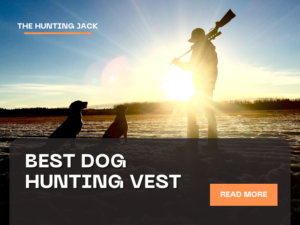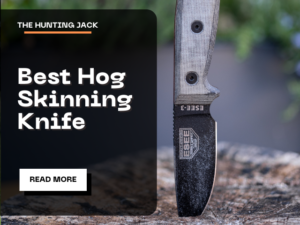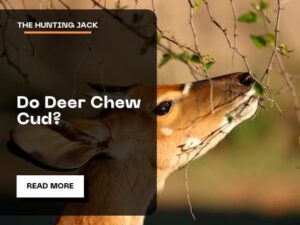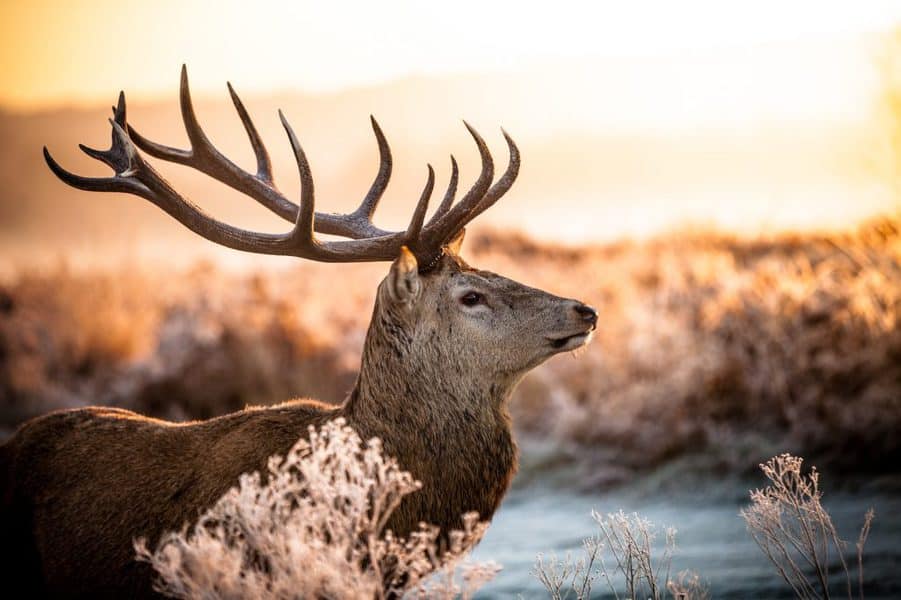
Deer hunting is what most people dream of when thinking of picking up a rifle and becoming a hunter. Still, there is a reason you don’t see deer trophies everywhere. They are hard to get. Deer is the hardest animal to hunt hands down, and that usually makes the results of a successful hunt much sweeter. For those people that don’t know where to begin from, I have compiled this article with some of the best deer hunting tips for beginners. With the knowledge gathered from here, you will be able to move on with more sophisticated topics and tactics since you will already have a solid base.
Jack’s Summary:
A successful deer hunt requires meticulous preparation including scouting the area in which you will hunt weeks before the open season, learning deer feeding and sleeping patterns, and most importantly – carrying the right gear with you. For all of those aspects, there are shortcuts and tips, such as creating a checklist, learning how to read deer tracks, and relying on gadgets like modern-day GPS tools to get a better reading of your surroundings. Your first shot might not be a clean kill and you probably won’t have it easy when you have to perform your first field dressing but everything comes with practice and proper guidance, as well as having solid knowledge on the deer hunting basics.
If you want to check out some of the best ground blinds for deer hunting for this year, head over to my full Buyer’s Guide! The absolute first thing that I want to talk about is deer types, as this can’t be a complete beginner’s guide without us going through the most common types of deer you can find in the United States.
Deer Types
These hoofed fellows have quite the big family counting tens of different types of deer in it. The two major families are Cervinae and Capreolinae. They are divided and then further subdivided into countless branches but I am going to go through only the most important and famous ones which are only four. They are:
- White-tailed Deer
- Mule Deer
- Caribou
- Moose
Let’s take a more detailed look at those types now.
White-tailed Deer
White-tailed deer (or just “whitetail” for short) is the most famous deer type in North and South America. It isn’t a large animal by definition but isn’t exactly small either. The males can weigh up to 300 pounds while the females (doe) weigh 150 pounds on average.
The coat color is brown during summer and gets more grey as winter draws nearer. The name of this deer comes from its distinctive tail which has a white underside. A fun fact is that once the deer senses danger it flags the tail up which contrasts with its body.
Mule Deer
The Mule Deer is another favorite of Americans when it comes to hunting. These deer can be found in the South American deserts and all across the US. The name comes from the big mule-like ears behind it has. The tip of the tail is white, the antlers are fork-like, and there is a white patch on their hind sides. All these traits set them apart from other types of deer. The coat is almost the same as the one of the whitetail but has a more grey tint to it.
I’ve written a detailed article on some of the best mule deer hunting tips which you can visit if you’re interested in hunting that particular type of deer.
Caribou
You’ve probably heard a lot of this kind, especially as a kid. That’s right – that is the famous Reindeer which lives in the Arctic regions. The interesting thing about it is that both the male and the female have antlers. Their fur is thick and there are two layers of it that act as insulation against the extreme weather. During their migration every year they can cover up to 3000 miles which is unmatched by any other land animal.
Moose
Funnily enough, most people aren’t aware of the fact that moose are a type of deer and are often surprised when they see them in such deer type lists. These deer are huge and even bigger than you can imagine in person. In fact, from all deer types, they are the largest and tallest. They inhabit the colder climate zones and can be found in Asia, Europe, and the United States. Their weight can get up to 1800 pounds. The male ones (stags) are differentiated by their huge leaf-shaped antlers. The span of those antlers can get up to 6 feet across. The coat is most often darkly colored in a mixture of brown and black.
Moose have a large flap of skin hanging from their necks called a “bell” which is also a distinctive trait. Despite their huge dimensions, they are excellent swimmers and can swim for miles when looking for food.
 Elk
Elk
Right after the moose, the North American Elk is the largest of the deer family on our continent. It lives in forests and often goes near their edges in search of food such as grass, leaves, bark, and plants. The antlers of the male elk are very big and shed every year. Males can engage in antler wrestling, posturing, bugling (dominant loud noises) during the rut. They are hunted for their antlers and meat as the meat is very high in protein and relatively low on fat. In the USA, the males are called bulls, while females are often referred to as “cows”.
Other Types
There are other types of deer that are famous around the globe but not so much in the US. Some of them are the Indian Muntjac otherwise known as the barking deer, the Sika deer, the Sambar, Fallow Deer, and the Chital. Some of them are protected all year round while others are legal to hunt during certain months but I will get into that near the end of this article.
The most famous kind of deer outside of the USA is the red deer. They are closely related to the American Elk but live in Europe, Western Asia, and parts of Northern Africa. it has brown and reddish fur. The males are called stags and can weigh up to 550 lbs. Their antlers grow throughout the entirety of their lives and can become quite massive. The females (hinds) have thin necks and are much smaller, without antlers. They live in groups within forests and flat areas.
Deer Hunting Gear
Even experienced hunters often find themselves in the middle of the sentence “Oh, I forgot my (insert item here)”. This is why hunting checklists are important especially when gearing up for a deer hunt that might take more than a day. There are a lot of examples online for well-made checklists but I always use a strategy of my own. I separate everything I have to take into four main categories:
- Hunting Equipment
- Accessories
- Clothing
- Essentials
Most people do further divisions such as “footwear, luggage, before the kill, after the kill, etc” but that complicates things too much for me. Let’s take a look at what my four categories have and see why I rarely miss taking something with me.
Hunting Equipment
This first category is my most important one. It includes literally everything intended for the hunt itself. You can, later on, subdivide it into additional categories like “weapons, optics, tree stands, etc” but I like for it all to be under one bigger category.
My hunting equipment consists of:
- My rifle or compound bow
- Scope(s), rangefinders, and binoculars
- Tools for scope adjustment/repair
- Ammo
- Hunting knife or field dressing kit
- Shooting bipod or tripod
- Calls
Once I have all that with me, everything else is just going to be an accessory and make my life easier but these are the essential parts of my hunting gear. If I am going up on a tree stand, I also make sure to bring the appropriate equipment, including the tree stand itself, climbing sticks, etc.
If you want to find some excellent scopes for your 308 rifles, head over to my full Guide on the topic: https://thehuntingjack.com/best-scopes-for-308-rifles/
Accessories
In terms of accessories, I can go on all day but as with the previous category, I have main ones that I always bring and additional ones that are optional and I choose whether to bring or not based on my mood. The mandatory ones are:
- Scent killers, cover scents, and deer lures
- Game cameras
- My tent and ground blind/tree stand
- Ground blind chair
- Hunting backpack
- Lights
- Compass
- License holder
On top of those, I usually bring first aid kits, flares, an extra flashlight, my knife sharpener, a rope, and a multi-tool. Those are always handy when you need them even if you think you will never do. Nothing is worse than field dressing a deer with a blunt knife.
Clothing
My clothing is different for each weather type. For instance, when I am hunting in the snow I bring hand warmers, an extra layer of clothes, thick bibs, some rain gear, a face mask, and insulated boots. In the early season, I go far less equipped with clothes as the weather is almost always moist and warm, and me having a few layers of clothes just won’t be practical. Then I bring my rain gear, camo cap, balaclava, a wind shear vest, and shooting gloves on top of the basic layers of clothing I normally wear.
Essentials
My essentials consist of a few things – the place I rest, my hygiene, and nutrition. I rarely go for hunts longer than 1-2 days but when I do those things are literally essential for me to bring, hence the name of this category. My list here consists of:
- Shower kit
- Sleeping bag (along with the tent and the ground blind if I am using one)
- First aid kit
- Extra water
- Socks
You might laugh at that last one but I’ve been in countless situations where my boots simply weren’t good enough to keep the water out and I ended up with water around my feet which is the worst feeling for me when I am trying to concentrate and track a deer.
90% of deer hunters prefer to use treestands or bowhunting ground blinds as they are an incredibly effective way of shooting a wary whitetail. Let’s introduce you to those two methods and give you the pros and cons of each of them now.
Tree Stands Vs. Ground Blinds
Let’s start with tree stands. Anywhere you get those big seaters or short twisted trees that allow for a good seating position, it is always a good idea to set up a tree stand. There are quite a few stands, though, meaning that you don’t necessarily need comfortable trees for your hunt. Those are:
- Ladder stands
- Hang-on stands
- Self-climbing stands
The ladder stands are strapped around a tree and allow you to climb up to a place where you set up your tree stand. Hang-on models have a ladder attached to them instead of being two separate pieces. They can be 10 to 20 feet tall.
When setting up your tree stand you want to find a good transition area or a travel corridor. Once you set everything up you will be high enough to be out of the deer’s line of sight. If the wind is right, you will have a great advantage and a good view that will allow you to make the perfect shot. The deer will never know you are there.
Tree stands are similar to the original hunting stands which are simple wooden structures that hunters use to stay above the ground and have a better view out.
Advantages
- You are out of the line of sight
- You have a good view out
- Good shooting opportunities
- Some stands are really easy to move from tree to tree
Disadvantages
- Calling won’t be as authentic as it would be from a ground blind as deer don’t usually wound up on trees
- Not very comfortable
- Tree branches can get in the way of your shot so you will have to do some trimming first
If there isn’t a great tree around or the trees aren’t in the right spot, you might want to come down to the ground for your shot. This is where ground blinds come into play. Getting up close in person with a deer is really a great experience for any hunter especially during the rut. During that time you will do a lot of calling and rattling that will attract does. Beat the ground or the bushes with your antlers. Make it sound like a fight and you will almost certainly attract a lot of attention to you. If you’re set on buying a treestand make sure you check out my guide on some of the best climbing treestands for bowhunting for this year!
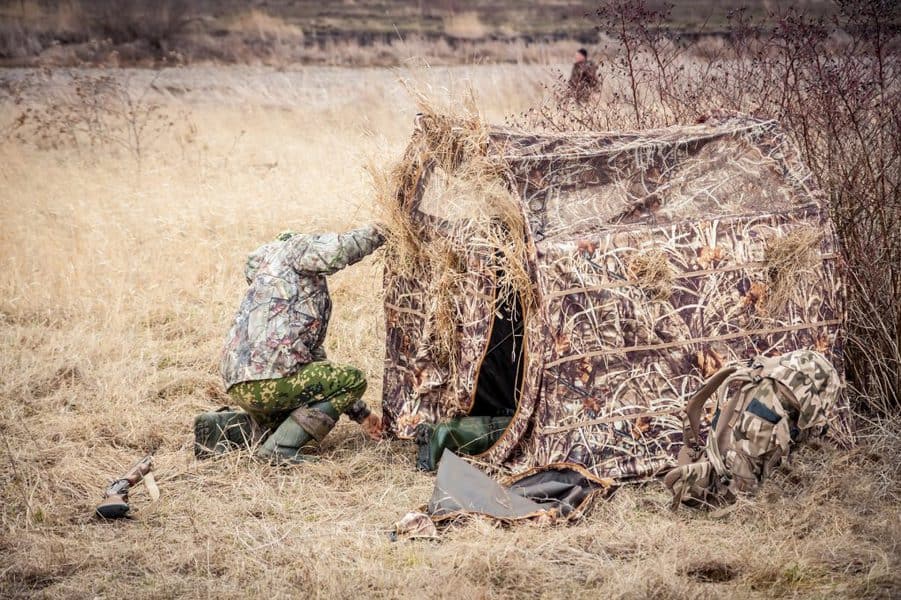
The challenge to all that is having your weapon prepared when you spot the deer. This is hard since they can hear you a couple of hundred yards away and usually focus all of their attention right at the spot where the noise comes from. Your best bet is to be with a hunting buddy or at least someone else to help you spot the deer before it spots you.
With ground blinds, it is a good idea to set them up before the hunting season so that animals get used to them. You will be both at the nose and eye level so you want to make sure that you are well blended in. This is also valid for tree stands, as animals will need to get used to them if they aren’t blended in properly.
Advantages
- Calling can be very attractive when done properly on the ground
- Generally cheaper than tree stands
- Great in terms of comfort compared to tree stands
Disadvantages
- You are in the line of sight so you have to be well camouflaged
- Limited shooting windows
- Have to be set up every time or left at the spot. It isn’t ideal to move around
If you want to learn more on the topic of blinds vs treestands, make sure you check out my detailed article! Now that we are done with the gear and what you have to bring along, let’s get into the most important factor for your success…
Where To Hunt Deer
This is where I will go all in and explain to you the aspects of public vs private hunting land in great depth. As I said, there are two types of land where you can hunt – public and private. Let’s start with the public one first, as it is the most commonly used one.
Public Land Hunting
To say it from the very beginning, hunting on public land is tough but the results are far sweeter. There are three types of ownership when it comes to these territories:
- Federal – The United States manages countless acres of land which are owned by people. Most of these lands are available if you want to hunt there.
- State-owned – The state manages and owns most of the state forests and wildlife management areas.
- Locally Owned – In this section fall all the land owned by counties, cities, and even school districts.
This last locally owned niche is not widely popular and few hunters know about it. That makes it a heaven for experienced hunters as it often has the best game.
The easiest way to find a public hunting area is through state hunting agencies. They will provide you with a lot of information as per the number of hunters in the area, and other terrain and wildlife details you want to know.
Pro Tip: You can always brag, but never reveal the area in which you got your trophy.
The two things you have to do after you get an idea of the region you want to hunt in are desk research and check for secret spots. Desk research consists of you checking out the map of the area and getting advanced GPS maps for it. Those GPS maps and apps are usually hyper-detailed and some companies specialize in creating them.
Secret spots are my favorite places to hunt because they are most often on private lands and are locally owned. You will have to know the local territory well to know which landowner to ask for his permission to hunt. Usually, it comes down to an agreement for a certain fee, while some landowners prohibit people from hunting deer on their land. The local units of government usually know where this is possible and where it isn’t.
Additional Considerations
There are some places where motorized access isn’t allowed so you will have to choose your gear wisely. Furthermore, hauling the deer’s body can be a grueling task even for the strongest. This is why you should either bring a group of hunting buddies with you or have a wheeled cart ready for this occasion.
Private Land Hunting
When it comes to hunting on private land you are going to have two options:
- Lease the land
- Buy it
Leasing is definitely not the fan-favorite option. It is costly and there are a lot of terms and conditions before you get to the fun part. The prices are usually calculated in dollars per acre of land. Still, an acre in the heart of Illinois known for its big bucks is going to cost you a bit more than a heavily wooded West Virginia acre.
That brings us to the more desired option – buying your own hunting land.
Having your own place is a true privilege and you can do whatever you want in it, whenever you want to. You can bring all of your hunting group and hunt for days if you want to. Even so, there are a few things that you will have to do to maintain your land healthy in terms of the deer population. Nothing is worse than spending a small fortune on private land and then scaring off all the bucks from it.
Check The Food Sources
When buying land you need to primarily consider the food and water properties of it. A whitetail deer will do three things in its day:
- Browse for food
- Find cover
- Find a freshwater supply
Having those three things on your land is an almost 100% guarantee it will be a welcome environment for big game. Those are the three major ingredients for whitetail populations.
Types Of Forests
Another thing that greatly helps is the type of growth. Thick old hardwood forests are no good since they shade out the bottom floors and leave no chance for food to grow there producing fewer browse options for your deer. Forests rich in bushes, twigs, seeds, leaves, and berries are heaven on earth, especially for whitetail.
Their favorite food is acorns. There are more than 50 species of oak that produces acorns but look for white oak as it has the most delicious acorns. These don’t have as much tannic acid in them, which otherwise creates a bitter taste.
Baits
You can either bait or feed your deer population by having baits such as:
- Corn piles
- Acorns
- Deer feeders
Deer feeders are excellent for bow hunters as they allow you to get to a relatively close range.
A well-managed plot of turnips, corn, soybeans, cereal grains, or peas is also a good way to keep deer within your reach.
When To Hunt Deer?
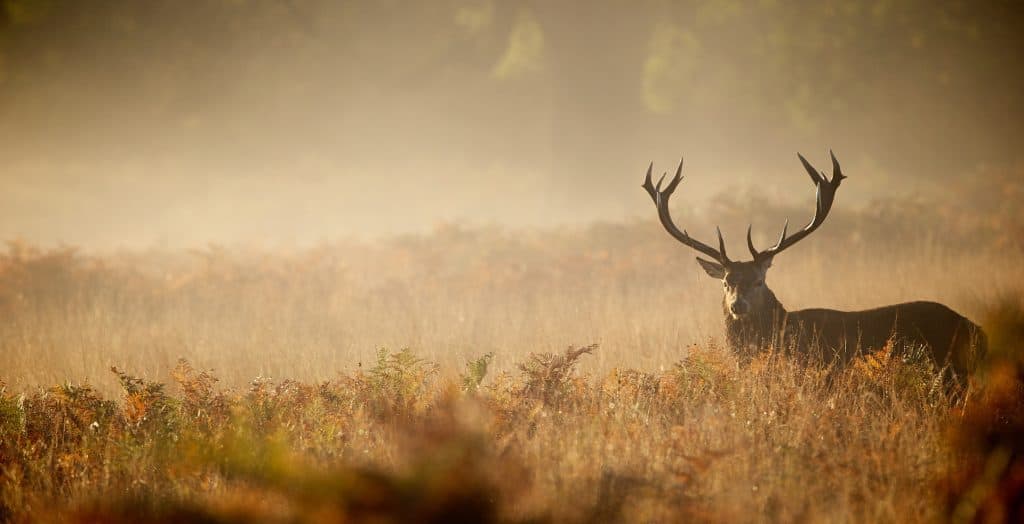
The earliest you can hunt deer is either September or October. Most states allow bowhunting from the 15th of September, although there are some exceptions like South Carolina which has always been the earliest deer hunting state and allows bowhunting from the 15th of August.
Make sure that you check with your local hunting agency when the start dates are for all weapons.
In the earliest parts of the hunting season, there are bachelor groups of male deer that are usually on the move an hour before dark. The best way to catch them is to scout the area with trail cameras and ambush them on their way to the food source.
As time progresses, deer behavior changes. This happens throughout all the hunting season and there are many details which the experienced hunters know by heart and can put them into good use. I have compiled a detailed article about deer behavior and how it changes during the early season, pre-rut, rut, and late season. You can click here if you want to visit it!
How To Track A Deer
The best way to start tracking deer movement is to do two major things:
- Start learning deer patterns before the open-season
- Gather as much information as you can about the area in which you are going to hunt
These two things are vital to your success. If you get to know the feeding and sleeping habits of a buck a few weeks before the hunting season, there is a good chance that you will meet him again a month later right where you expected him to be. Now, of course, those things change and older experienced bucks can be a little unpredictable and very cautious but you are increasing your chances by gaining more knowledge about the game in the area and about the area itself.
The things that help hunters track down a buck are:
- Tracks
- Droppings
- Trails
- Rubs
- Scrapes
- Beds
I’ve discussed all of those in immense detail in my dedicated article on how to track a deer, which is a must-read for any rookie that wants to have a successful first hunting season!
Luring & Calling
There are many ways to lure in bucks and does. Some of the more successful ones are with deer scents, scent wicks, grunt calls, or rattling with antlers. There is a reason all those methods work and it will become obvious in a moment. Now, let’s check the methods one by one.
- Luring with deer urine
This is one of the most effective scents you can use to draw deer to your location. People even do it without the intention of hunting deer but rather for the sight of it. Just hang it on a tree and wait for the does to come. If you want to attract deer, apply doe scents on the trees and grass around your stand.
The period in which this tactic will be the most effective is roughly 8 to 10 weeks before the rut.
- Scent Wicks
Those are also hung on a tree and the more you hung the better the results. Find a good spot and place a few of them around your area. Place them around 5-6 feet above the ground for optimal dispersion into the air. Try minimizing your scent on the lure as it can be detected by old deer with experience. Gloves help, although scent killers are the most effective solutions.
- Grunts
Whitetails are extremely vocal and knowing how to use their own vocalization against them will play a major factor in your success. Using a grunt successfully and in the right moment will pull a deer within your range. There are several types of grunts including social, trailing, tending grunt, buck roar, doe grunt, snort wheeze, estrus bleat, and fawn in distress. The two most important ones are the tending grunt and the slight variation of it called “breeding” grunt.
The tending grunt is what typically a young buck would make when it is on the tail of a doe. The breeding grunt is more drawn out and deeper and is made by a more mature deer.
Logically, if you are hunting in areas full of older bucks, you are going to want to use the breeding grunt as it will attract bucks aged 5 years or older. The tending grunt, which is shorter and in higher pitch will attract younger, 2 to 3-year-old deer.
Both these grunts are a great choice for a peak-rut call. You can even do combinations of grunts like using the trailing grunt (short and rhythmic) and then follow up with a tending grunt in about 10 minutes. Always make sure that your grunts sound realistic. Investing in a good grunt call is never a bad idea.
- Antler Rattling
This is by far the most famous method of attracting bucks. Rattling suggests a lot of things including a fight or a scuffle between two males. That can attract both other males and females. Every hunting group has at least one set of antlers that they bring with them for that very reason.
Here are a few tips that are proven to work when rattling:
- Do it in the morning. Morning rattling is proven to be more effective in luring deer
- Use this luring technique when the weather is cloudy, cold, and calm without much wind
- Do it on the ground. Rattling on tree stands might be effective but most experienced bucks will know that something isn’t right. Still, tree stands give you far more visibility and you have a higher chance of seeing a buck that has responded positively to your rattling
The way I like to rattle is by doing it quietly for a few minutes and then be completely quiet and look around for about 5-10 minutes. Then I rattle as hard and loud as I can for 2-3 minutes. Bucks respond far better to loud rattling but you need to start off lightly just in case there is something in your area. If the whole process doesn’t bear any success, I usually wait for around 30 minutes and change positions.
Now, let’s get to the fun part, shall we?
Shooting Your First Deer
Hunting a deer is an activity that requires great patience. Sometimes it can take days before you spot your first deer and even more time after you are in a good shooting position. Different hunters have different tactics but they can all be narrowed down to two – either stick to one spot for hours or roam. In my opinion, the waiting is what makes it all exciting. Others love to move around and track the deer.
Once you spot a deer it is paramount to remain patient. Scout the area around it with your binoculars or spotting scope and see whether there are more deer around. If there are, wait until some of them heads into a direction that will suit you better for your shot. Check the deer’s antlers as well, as some states do not allow to kill ones with big anglers (usually over 6 pounds). If the particular deer isn’t legal to be shot wait a few minutes and see whether others will come, instead of shooing it off.
Once the deer starts approaching you it is time to draw your weapon and take aim. Before we get to the whole aiming and shooting part, here are a few spots where you can shoot the deer. Each of them has its advantages and disadvantages so choose carefully:
- In The Head. This is the instant kill area. A bullet through the brain will solve the issue in a matter of seconds with minimal meat lost. The most ideal place to make this shot is behind the ear, as that is where the brain is. The disadvantages are that you won’t be able to save the head for taxidermy if you want to keep it as a trophy. Another disadvantage, especially for young shooters, is that this is the hardest and smallest target to hit. The head moves the most and a shot behind the ear is hard even for veterans.
- The Neck. This is one of your best options since it is as lethal as the head, as the bullet will go through the deer’s spine. A shot carefully placed behind the jawline when the deer is showing you its broadside should do the job. The downside here is that you will most likely have to finish the kill with a second shot or slitting the throat since the first shot is usually not enough for a kill.
- Behind The Front Leg. This is the most common shooting target both for archers and riflemen. Shooting some 5-6 inches above the chest behind their front leg is almost a guaranteed shot through the heart and lungs of the deer. In most cases, the deer won’t go down right after the shot and will recover. After that recovery, it is possible that you will have to track it down using the blood trail. Still, being the biggest target, this is often preferred by beginners and even experienced hunters who don’t mind a little tracking.
Now, let’s get to the shooting itself. Once you get a good aim at your first deer, make sure to breathe, relax your muscles, switch the safety of your rifle off, and prepare to shoot. The shot should happen after you are relaxed and have exhaled. That is the moment in which your body is motionless and your hands are the sturdiest. If you want to remember the sequence, just memorize the BRASS rule.
- Breathe
- Relax your body
- Aim your weapon
- Stop breathing at the end of your exhale
- Squeeze the trigger (fire your bow)
Pro Tip: Always confirm visual contact with your target. Never fire your weapon if your vision is obscured or you have no visual and only assume the animal is there. Far too many hunters die because of the many beginners not following this rule.
Things To Do After You’ve Shot The Deer
After you’ve shot the deer, don’t rush immediately to it, as you can spike up its adrenaline and drive it into an adrenaline rush. The consequences of that are that you will have to follow a blood trail for a few miles. Wait a few minutes, while trying to keep a visual on your target and then go examine the spot in which you shot it to see where the blood trail goes. Gut-shot deer take some time to die so it is important to track it, find it, and finish what you started.
Once you find the wounded deer, carefully examine it and see if its breathing or not. Pink foam coming out of its mouth is a good sign, meaning that you’ve penetrated the lungs and the animal will be dead shortly, if not dead already. If it’s still breathing, get to a close-enough distance to make an accurate shot to the brain or heart of the animal.
Do not try to slit its throat if you are a beginner. Nothing is more dangerous than an angry, frightened, wounded deer with antlers on its head.
Field Dressing
Right after you confirm the deer is dead you should be starting the gutting process. If your hunting area has motorized access, then using an ATV or another type of vehicle to get the deer to a place where gutting will be easier. If that is not the case, then you should be dressing the carcass and breaking it down to pieces that are easy to carry back to your camp.
Pro Tip: A stick to the eye is the best way to check if the animal is truly dead. If it isn’t, there will be an apparent eye reflex.
The one thing you absolutely need to have a is a good gutting/hunting knife. I always bring a knife sharpener with me just in case.
If you want to make a shoulder mount for a trophy make sure that you don’t cut anywhere above the sternum. Start with the pelvic area and make an incision there. Continue with your cut around the genitalia and build your way gradually to the sternum. Remove the genitals carefully along with the mammary glands of the animal. Always cut away from your body and keep the blade away from you and your fellow hunters.
To get the organs in the chest cavity, you will need to make a cut in the diaphragm and take them out. Once that is done, you want to begin cutting towards the tail until you separate the pelvic bone into two. Once you’re done with the cut, step on the leg and pull the tail up – that should separate the two rear legs. Take the intestines out and cut the membrane that is connecting them to the spine (a similar membrane holds the heart and lungs as well).
Once all organs are out you want to turn the deer around so that all the blood can drip away from the body. After that is complete, you have a ready carcass to take for further butchering and taxidermy.
Tip: Always wear rubber gloves to protect yourself from potential infections or tics that are migrating from the cooling body. Also, don’t take your orange vest off even when you are dressing to prevent being mistaken for game.
Frequently Asked Questions
What is the best time of day to deer hunt?
if you’re hunting from a deer stand, the best time of the day to hit it would be right before daybreak. Try staying there up until noon to score the larger kills.
Is it better to hunt in the morning or evening during the rut?
During the rut, you can and should hunt whenever you possibly can. Bucks are where does are so try sticking around doe’s bedding areas around the morning and noon. Later in the day, you can find bucks near potential food sources.
Where do bucks like to bed?
Bucks prefer to bed around solid objects such as rocks, logs, and others. They face upwind with their nose but also keeping an eye downwind. Their ears are always working and detecting any possible sounds around them as well. That 360-degree security system allows bucks to stay safe even when they rest.
Final Words
Some of the best deer hunting tips for beginners can be learned on the field. Still, knowing what you are up for before you head out in the open is a vital part of your success. Experienced hunters will tell you that most of their knowledge comes from frequent hunting but reading and sharing information has always helped them gain a slight edge over fellow hunters and score the bigger buck. Always make sure that you are well within your state’s hunting regulations and requirements and keep safety in mind all the time.

